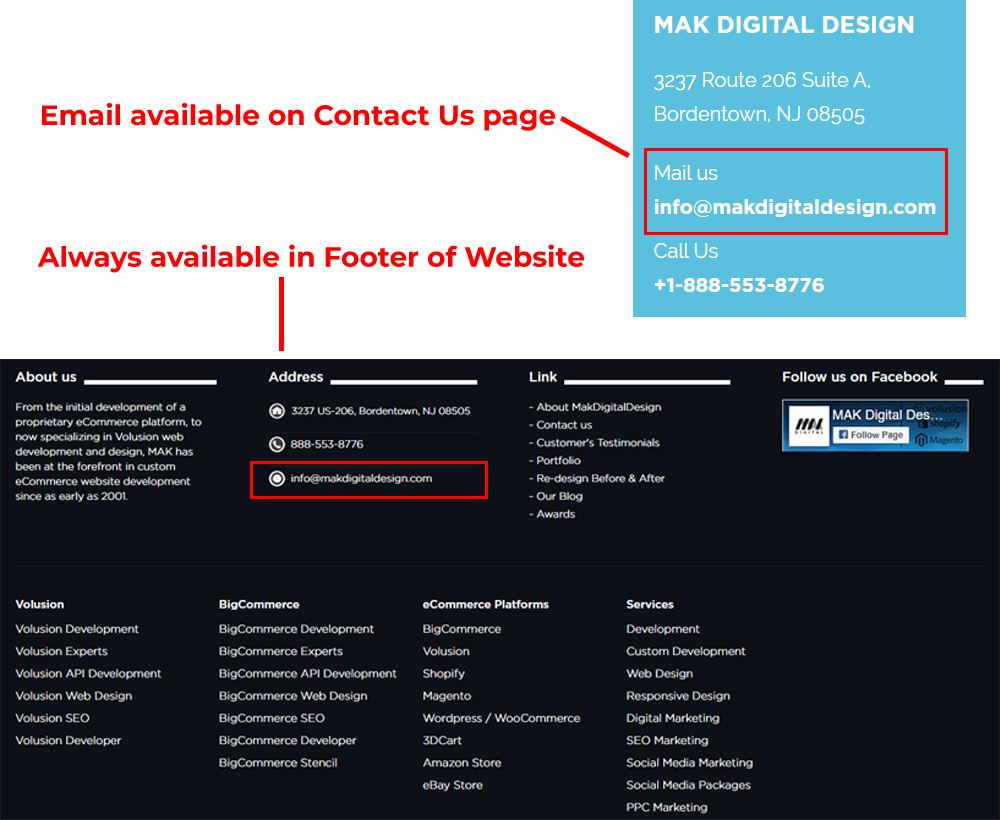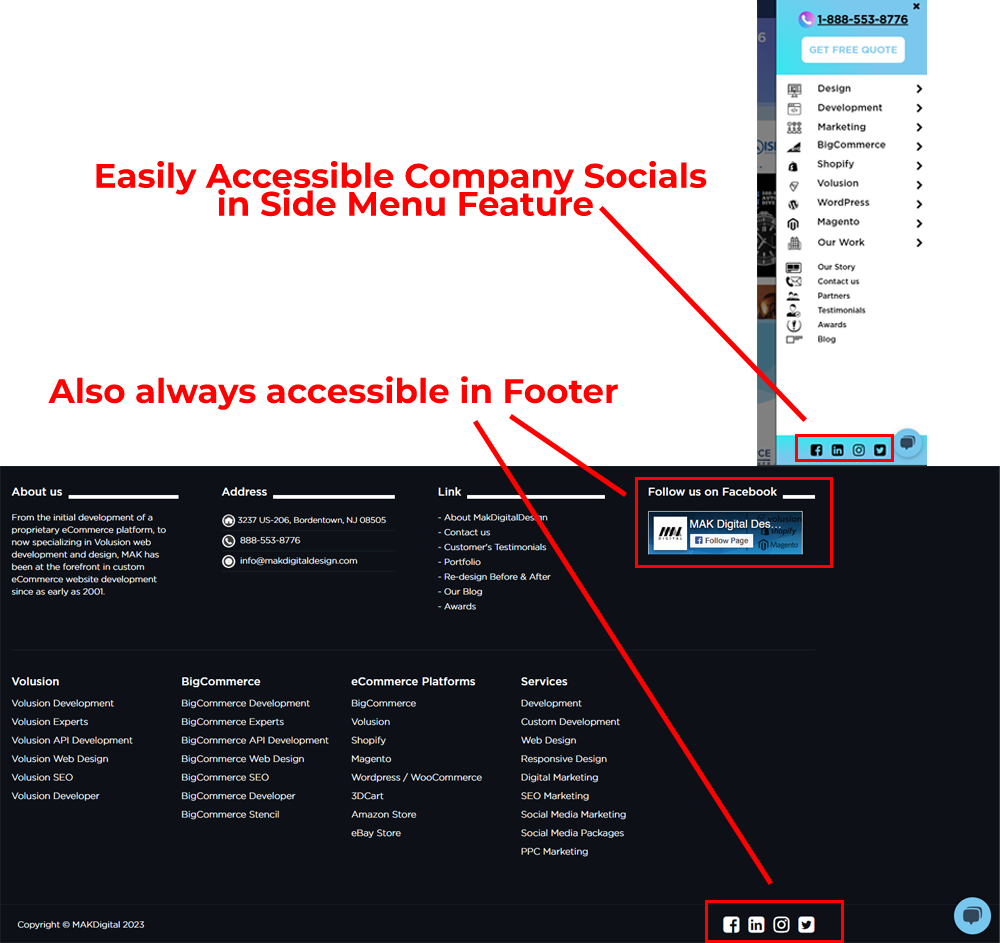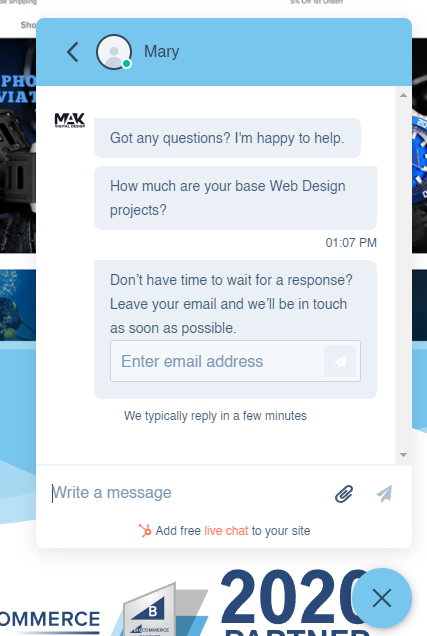
One of the best products of modern technology is eCommerce. The convenience of shopping online and getting home delivery is refreshing, although not without its cons. When shopping in-store, buyers receive personalized customer support that helps them understand the store’s shopping process, the buyer’s product choices, and available payment methods. Onsite shopping makes buyers feel welcome, which is not exactly the same as when shopping online. Thankfully, the eCommerce industry keeps growing with technological advancement, allowing eCommerce stores to provide similar customer support buyers get when shopping in-store. With the help of automated solutions, self-service channels, and timely human interaction, you can turn a first-time shopper into a repeat customer using these customer service channels.
Phone
Modern eCommerce shoppers are generally tech-savvy enough to find resolutions for their concerns by themselves. But when all else fails, a phone call can be a real lifesaver. Phone support provides a personalized touch because it allows buyers to talk to a human about the challenges they are facing. Buyers can ask questions, get real-time answers, and follow-up calls if necessary. And they can rest assured that the customer support agent on the other end of the line will provide support tailored to their unique challenges.
Phone support is also ideal for older customers who might struggle with the intricacies of eCommerce shopping. A phone call is a simple customer service channel. It doesn’t require an internet connection, an email address, or signup or login into an account. Display your phone number boldly on your website, social media pages, emails, and more to make it easy for buyers to contact you when they face challenges.

Because the email culture is old, every buying demographic, young and old, in the eCommerce industry knows how to send an email. It also provides an intimate personalized touch, but without the social undertaking of having a conversation with a random customer support agent. You will be surprised to learn that many buyers prefer sending an email to a phone call because they don’t have to talk. Buyers can describe their challenges at length and get a detailed response addressing their specific concerns. Unlike phone support, email support doesn’t provide real-time answers. Instead, buyers must keep sending follow-up emails to ask related questions to their original questions. Not to mention that the customer support team often delay in replying to email queries from customers.

Social Media Platforms
You’re wrong if your eCommerce business doesn’t have social media presence in today’s world. Since most eCommerce shoppers are millennials, Gen Zs, and Gen Xers who are active on social media, you can actively engage with them on social media platforms. Social media allows you to maintain multiple ongoing conversations simultaneously and creates a marketing opportunity for you to show your excellent customer service. Unsatisfied customers might take to social media to talk about their negative experiences with your brand. You can reply to them and try to provide satisfactory resolutions, and if you succeed, onlookers will see that you are passionate about serving your customers.
Additionally, social media fosters reputation management.

Live Chat
A live chat allows buyers to get quick answers while shopping on or browsing an eCommerce store without leaving the page they are. Because buyers don’t have to go to another page to access live chat support, it can reduce your abandoned cart rate and increase average order value by cross-selling and upselling. Many buyers prefer live chat because it eliminates the need to wait in a phone call queue, the average email response time, and social media 24-hour response time. The best thing about live chat support is that buyers chat with an actual human being.
On the flip side, live chat support can be challenging to manage. If your eCommerce store receives traffic spikes, with many buyers using the live chat at the same time, your customer support agents may struggle to provide excellent customer service. eCommerce buyers expect a prompt response — in seconds when using a live chat. So, if you can develop a strategy to provide quick and effective responses to multiple buyers at the same time, live chat is a game changer.

A Chatbot
Chatbot support is similar to live chat support but without a human response from the eCommerce business. Buyers will receive timely automated generic responses to their queries. Load your AI-based chatbot with common questions buyers ask and provide concise answers they can access by engaging with the chatbot. The best thing about chatbot support is 24/7 availability.
Combine your AI chatbot with live chat support to make a unified chat-based support system. When the AI chatbot runs out of solutions, a human can intervene with the live chat functionality to ensure that customers get a smooth customer service experience.
Instant Messaging Platforms
Buyers also like using instant messaging platforms to seek customer support. Research the preferred instant messaging platform of your customer base; for example, WhatsApp and Facebook Messenger, and provide it on your website. Buyers also like instant messaging because it creates a direct communication line between them and a customer service agent. As a small business, instant messaging is a budget-friendly customer service channel that can provide similar intimate personalized touch buyers enjoy.
You can also provide automated responses via instant messaging platforms, but ensure to train your customer support team about instant messaging customer service.
Self-Service Channels
Again, modern eCommerce shoppers are tech-savvy and will attempt to resolve their challenges by themselves before finally resorting to contacting customer service if they are unsuccessful. Instead of getting simple and repetitive questions, trust that many of your customers can help themselves and create an environment for them to do so. Self-service channels allow customers to find detailed answers addressing their concerns without contacting the customer service team. Provide self-service channels, such as FAQs, a blog, support pages, product pages, a knowledge base, and an active customer community.
Bottom Line
eCommerce customers are after the easy life, that’s why they shop online. But if they have to seek customer support, know they tried and failed to resolve their issues themselves. Some customers will rather stop shopping altogether if they jam any obstacles than try to contact customer support. Hence, it is your duty as a business to create a welcoming environment for customers to make them feel more comfortable using your customer service channels.
Mitch is an experienced eCommerce Project Manager specializing in delivering seamless online experiences and driving digital growth. With expertise in project planning, platform optimization, and team collaboration, Mitch ensures every eCommerce initiative exceeds expectations. Passionate about innovation and results, Mitch helps businesses stay ahead in the dynamic digital landscape.

